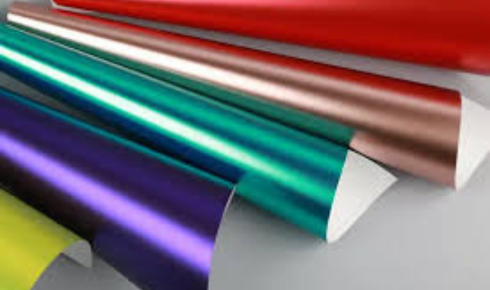There’s something oddly satisfying about watching a car transform right before your eyes. One day it’s a plain white sedan, and the next, it’s a head-turning, mirror-finished beauty gliding down the street. That’s the magic of modern vehicle wrapping — and behind most of those jaw-dropping finishes lies a simple truth: premium results come from cast wrap material.
Sure, the market is flooded with different types of vinyl films, each promising flexibility, gloss, and durability. But not all wraps are created equal. There’s a reason professional installers, detailers, and car enthusiasts still swear by cast vinyl when quality and longevity truly matter.
The Science (and Art) Behind a Perfect Wrap
Before diving into why cast vinyl stands out, it helps to understand what separates it from cheaper alternatives. Most lower-end films are “calendered” — meaning they’re made by rolling and stretching heated PVC material into sheets. It’s a bit like flattening dough with a rolling pin; it works, but it stresses the material.
Cast films, on the other hand, are made by pouring liquid vinyl onto a casting sheet and letting it dry naturally. The process eliminates tension and gives the film a smooth, dimensionally stable surface. That stability means your wrap won’t shrink, warp, or lift at the edges over time — which is why cast materials can hug every curve of a vehicle like they were born to do it.
Simply put, a cast vinyl wrap is the difference between a finish that lasts months and one that turns heads for years.
Durability Meets Design
One of the biggest reasons people invest in car wraps is the blend of aesthetics and protection. A well-made cast film doesn’t just look good — it shields your paint from UV rays, debris, and road wear. Unlike cheap films that fade under sunlight, cast wraps are UV-resistant, meaning your colour stays vibrant even after thousands of miles.
This makes them perfect for high-performance cars, fleet vehicles, and even boats or aircraft. Anywhere you need reliability and beauty to coexist, cast vinyl holds its ground. And because it conforms so effortlessly to complex shapes, there’s virtually no limit to creative designs — from matte blacks and carbon-fibre textures to chameleons that shift hues in sunlight.
Why Professionals Love Working With It
Ask any seasoned wrap installer about their favourite material, and chances are they’ll mention a cast wrap before you even finish the question. The reason? It’s more predictable.
When applying film over contoured surfaces — bumpers, side mirrors, or deep recesses — cast films stretch evenly and recover beautifully. Calendered films, by contrast, can fight back, wrinkle, or tear. And once that happens, there’s no going back.
The thinness of wrap cast vinyl also helps. It’s light, flexible, and allows for precise detailing without the risk of air pockets or overstretching. Plus, removal down the line is cleaner and less likely to damage the paint underneath — a blessing for car owners who like to switch styles often or lease their vehicles.
It’s Not Just for Cars Anymore
Though car enthusiasts made it popular, cast vinyl wraps have now spread across industries. Businesses use them for branding and signage, interior designers use them to reinvent walls or furniture, and tech manufacturers wrap equipment for protection or style.
Architectural wraps, for instance, can turn plain office panels into sleek metallic finishes. Even yachts and motorcycles get the cast treatment now, thanks to its durability against saltwater, sunlight, and vibration. The versatility of cast wrap material has pushed the boundaries of what’s possible — proving it’s not just a product but a creative medium.
Longevity That Pays for Itself
Here’s where the real-world math comes in. A cast vinyl wrap might cost more upfront, but it saves money in the long run. Because it doesn’t shrink or fade easily, you won’t be replacing it every year. Plus, its ability to protect the original paint keeps resale value higher.
If you’ve ever seen a poorly aged wrap — peeling edges, dull finish, bubbles — that’s almost always the mark of cheaper film. Cast vinyls, on the other hand, maintain their finish for five to seven years (and sometimes longer) with proper care. That’s a long time to enjoy a refreshed look without repainting.
And yes, maintenance is simple. Wash it with mild soap, avoid harsh chemicals, and park in shade when possible — just the basics. Treat it well, and it’ll return the favour tenfold.
Choosing the Right Film
Of course, not all cast vinyls are equal either. Reputable brands like 3M, Avery Dennison, and Oracal are known for their innovation and colour stability. Choosing between them often comes down to texture, finish, or installer preference. Some provide better gloss levels, others have self-healing properties or easier application adhesives.
But if you’re going to invest, always insist on genuine cast-grade film. Imitation products can look convincing but rarely perform the same way. Remember, a great wrap is 50% material and 50% installation — the partnership of both is what makes the magic happen.
Wrapping Up (Pun Intended)
Whether you’re changing your car’s colour, promoting a brand, or simply adding a personal touch, the quality of your vinyl makes all the difference. The flexibility, durability, and refined finish of cast films have made them the industry’s gold standard for decades — and that’s unlikely to change anytime soon.
There’s a quiet satisfaction in knowing your vehicle not only looks stunning but is also protected beneath the surface. That’s what true craftsmanship feels like — when technology and artistry meet to create something that lasts.
So the next time you find yourself tempted by cheaper alternatives, remember this: a wrap is only as good as the material it’s made from. Choose wisely, and you’ll enjoy not just a new look — but peace of mind every mile of the way.

